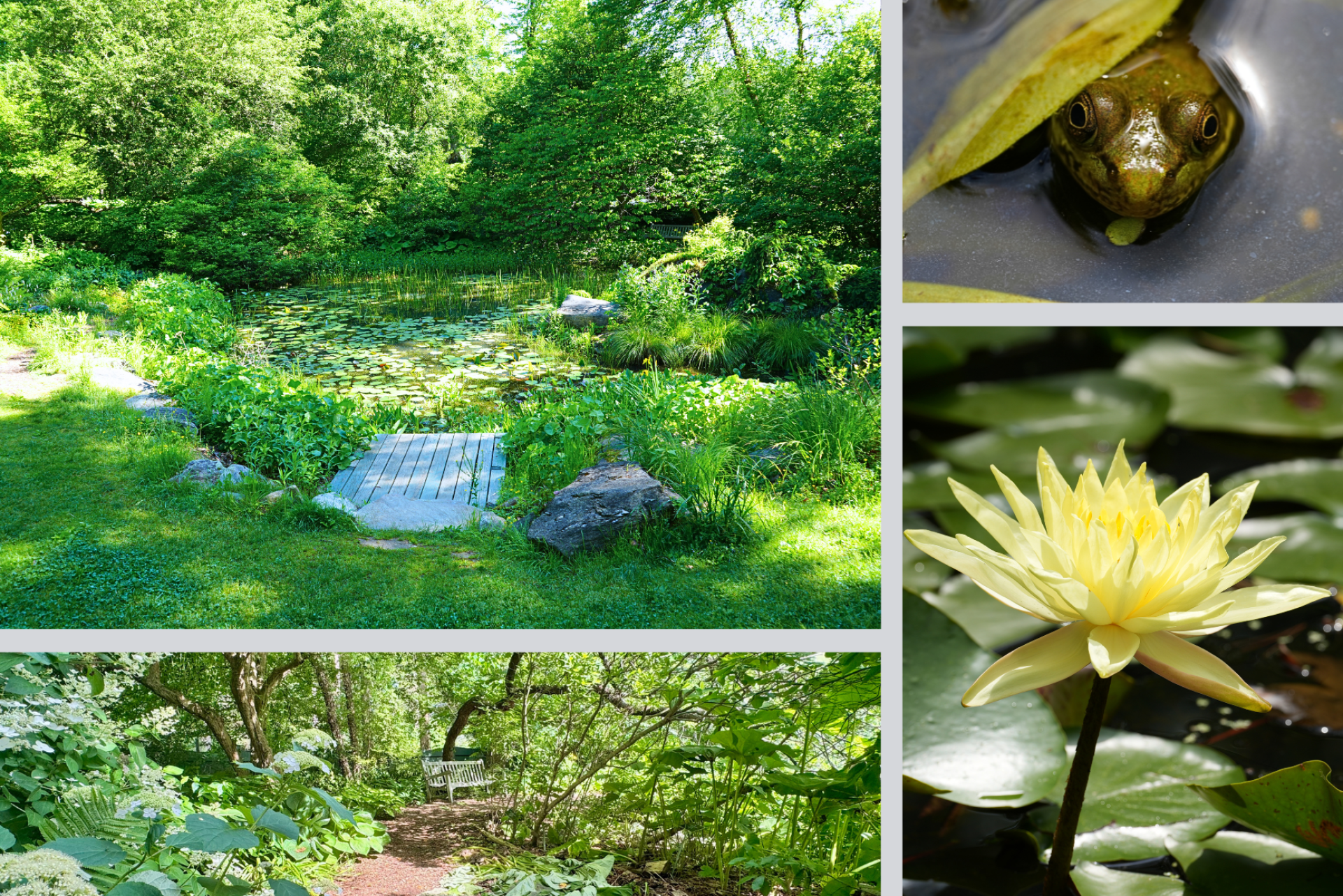You are here
Pond Garden
Pond Garden
Despite its naturalistic look, this is a man-made pond with a waterproof liner. But local wildlife doesn't care if a pond is natural or artificial. Frogs, toads, dragonflies, salamanders, water beetles, and other animals gravitate to and depend upon this watery habitat.
Creating a Community
The Pond Garden is more than just plants and water. It's a living community, designed to support a broad range of flora and fauna. The greatest variety of animals and plants thrives near the pond's edge, in the shallow water and its fringe of plants. Many native wetland plants have a symbiotic relationship with native pollinators Cardinal flower (Lobelia cardinalis) depends on hummingbirds to fertilize its long, red tubular flowers. Seeds of the little bluestem grass (Schizachyrium scoparium) feed an array of birds and small mammals, while bluestem leaves host dusty skipper and swarthy skipper butterfly caterpillars. Monarch butterfly larvae live on the common milkweed (Asclepias syriaca), and a vast array of insects — from flies and ants to beetles, bugs, bees, and butterflies — sip the nectar from its flowers. Swamp milkweed (Asclepias incarnata) also feeds both larval and mature butterflies.
Did You Know?
Butterflies and bugs aren't the only ones dining on moisture-loving plants. In China, Korea and Japan, cooks traditionally used both the stems and bulb-like spring shoots of the Japanese butterbur (Petasites japonicus var. giganteus), the four-foot tall umbrella-like plant on the pond's north side. However, although butterbur was featured in traditional dishes, it is now considered to be poisonous and should not be eaten. Planting Japanese butterbur is not a decision to undertake lightly. The plant spreads vigorously, and once established is hard to get rid of.
Help Our Garden Grow!
Your donation helps us to educate and inspire visitors of all ages on the art and science of gardening and the preservation of our environment.
All Donations are 100 percent tax deductible.


